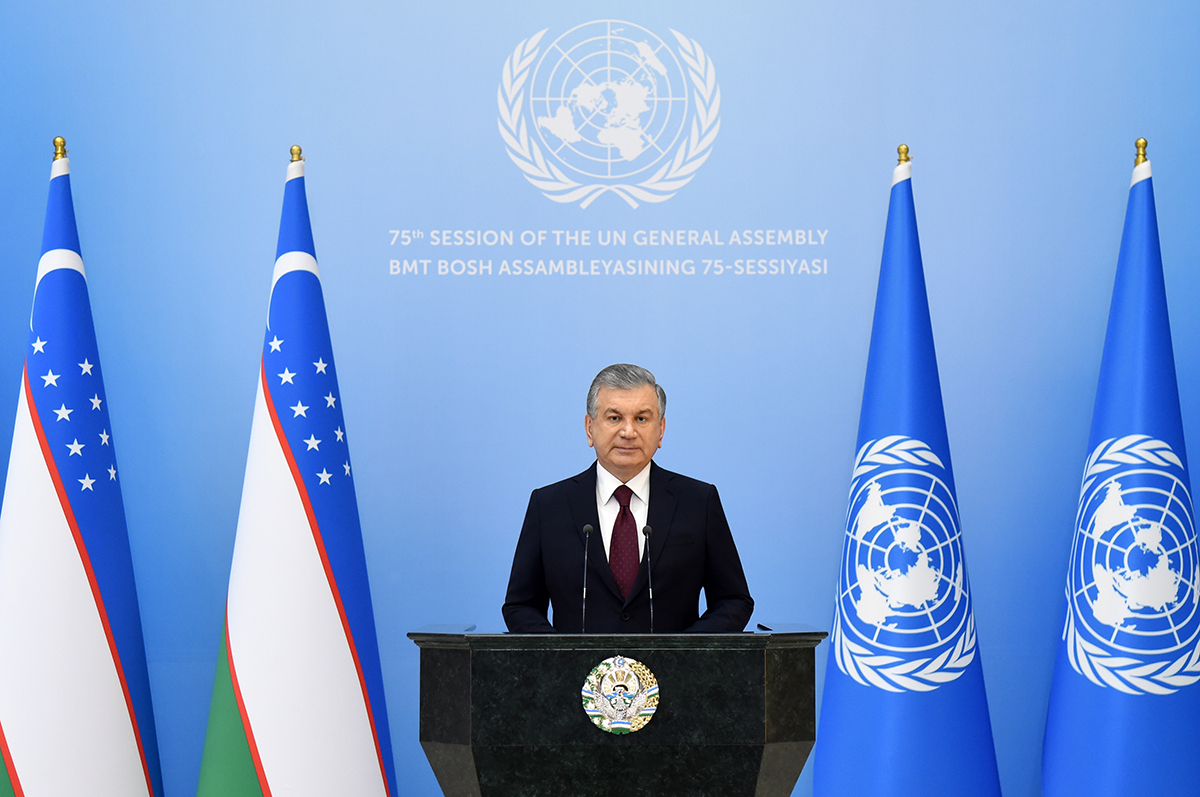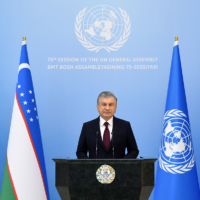The initiative to strengthen regional interconnectivity was proposed by President of the Republic of Uzbekistan Shavkat Mirziyoyev as part of Tashkent’s new foreign policy strategy aimed at turning Central Asia into a region of security, stability and sustainable development, one that is integrated into the world economy.
In recent years the region has experienced major positive change reflected in the strengthening of strategic partnerships and mutually beneficial cooperation on all levels.
A newly developed political climate of mutual trust and support made it possible to jointly solve urgent issues of general regional development, first of all in trade, then in industry, investment, energy, transportation, water use, security, environmental protection, and in raising the quality of the population’s social environment and quality of life.
The moment that defined this trend was the launch of the initiative to convene consultative meetings of the heads of state in Central Asia. The Joint Statement of the Tashkent Consultative Summit issued on Nov. 29, 2019, emphasizes the fact that “the current trend toward regional convergence in Central Asia is a historically conditioned reality.”
The intensified regional cooperation has contributed to the strengthening of trade within Central Asia, an increase in circulation of goods across the countries of the region, and the development of trade and economic cooperation. For example, in the period between 2017 and 2019, the circulation of goods among the countries of Central Asia almost doubled, from $2.7 billion to $5.2 billion.
This positive trend continued even during the COVID-19 pandemic. In spite of the negative impact of the restrictions prompted by the coronavirus, the circulation of goods between Uzbekistan and Central Asian states from January to October in 2020 amounted to $3.8 billion. This was another piece of evidence showing that the deepening of regional interconnectivity is a much-needed process that contributes to the emergence of a stable and dynamically developing region.
Today, it is important for the states of Central Asia to ensure that they take politically coordinated steps aimed not only at intensifying regional economic cooperation, but also reaching a new, interregional level of interconnectivity.
During the 75th session of the U.N. General Assembly last year, the president of Uzbekistan proposed the creation of a Regional Center for the Development of Transportation and Communication Interconnectedness under the auspices of the U.N. to ensure deep integration of our region into global economic and transportation corridors, increasing the competitiveness of the Central Asian countries in the global market for transportation services. The center’s main tasks are to include the adoption of regional programs, projects, and documents of strategic importance for the implementation of joint transportation and logistics initiatives.
The creation of international transportation corridors and infrastructure in the region is vital for the countries of Central Asia, which are extremely interested in growing export volumes, diversifying their foreign trade, entering new markets and developing and exploiting new transportation routes.
One of the important areas in this respect is South Asia, a region historically closely connected to Central Asia by extensive migratory flows and intensive circulation of goods, as well as the rapid spread of scientific ideas and mutual cultural influences.
Undoubtedly, a key link in the regional interconnectivity between these two areas is Afghanistan, viewed as an integral part of the greater region. Today, there are new strategic opportunities for the integration of Afghanistan into international infrastructure projects and the development of transportation corridors intended to connect them.
In turn, Central Asia also has much to contribute to the deepening of interregional cooperation. The region boasts a wide range of economic opportunities, including a lot of energy and other natural resources, a growing consumer market, a leading position in crop production, a diversified transit and transportation infrastructure and a skilled labor force.
Examples of the dynamic regional policy include the trilateral negotiations on transportation interconnectivity between Central Asia and South Asia, which took place in Tashkent on Feb. 2, with the participation of high-level delegations from Uzbekistan, Afghanistan and Pakistan. The meeting resulted in the signing of a joint action plan for the construction of the Mazar-i-Sharif-Kabul-Peshawar railroad.
The implementation of this project will contribute to reaching one of Central Asia’s strategic objectives, which is ensuring access to the Indian Ocean, in particular the Pakistani ports of Karachi, Kasem and Gwadar, and linking the South Asian railroad system to the Central Asian and Eurasian systems, significantly increasing the transit potential of the entire region.
This project will facilitate growth in trade, increasing imports and exports throughout Europe, Central Asia, Pakistan, India and Southeast Asia, as well as substantially reduce delivery times for goods on regional and international routes. For example, once the project is fully implemented, the transport of goods from Pakistan to Uzbekistan will take not 35, but just be three to five days. Based on preliminary calculations, the development of the route will reduce the cost of transporting one 20-foot container by almost three times.
Diversification of transportation routes connecting, on the one hand, Europe to Asia, and on the other hand, Central Asia to the sea routes, will allow the states of the region to strengthen their position in global supply and manufacturing chains.
Moreover, the construction of a trans-Afghan railroad will make an important contribution to regional security. Improving the socio-economic situation in Afghanistan’s northern and eastern provinces will make it possible to strengthen the security of this country and neighboring states.
All these issues are to be discussed at the Central and South Asia: Regional Interconnectedness. Challenges and Opportunities, a two-day international conference to be held in Tashkent from July 15. The goal of the conference is to create a political and expert platform for a multilateral discussion of the model for a Central Asia-South Asia strategic link in the key areas of transportation and logistics, energy, trade, manufacturing, investment, technology, culture and humanitarianism.
At the conference, Uzbekistan will present its strategic vision regarding the strengthening of interconnectivity in Central and South Asia. In addition, the event will offer a platform conducive to fruitful discussion of specific proposals regarding the utilization of the transportation and transit potential of countries in the two regions, as well as opportunities for entering promising markets, increasing exports, fostering investment, innovation and technological development, and growing humanitarian and tourism exchanges.
Developing an understanding of all aspects of the Mazar-i-Sharif-Kabul-Peshawar railroad project through discussions with interested countries and international financial institutions will become a highlight of the conference; in a way, it is to become a culmination of its organizers’ large-scale efforts.
In general, the expansion of interregional links between Central and South Asia and the utilization of these regions’ massive economic, transport, energy and humanitarian potential are natural and much-needed processes. The main areas of promising collaboration among the countries involved include the development of new transportation corridors that give the countries of Central Asia access to southern seaports, cooperation in the energy sector (electricity exports), facilitation of mutual investment, and the growth and diversification of international trade. The complementarity of the markets and the opportunity for the countries of the region to get access to the shortest route to an ocean create natural conditions for intensifying and strengthening collaboration.




